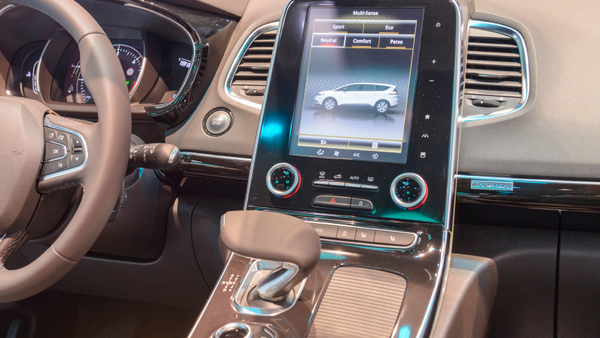The insurance industry is at an exciting precipice.
|Telematics is gaining steam as more insurance agenciesimplementing telematics programs see a positive effect on theirbottom line, and more consumers begin to realize the advantage ofone of the most prevalent uses of telematics: usage-based insurance(UBI).
|UBI programs allow policyholders to voluntarilytrack their driving habits and share the information with theirinsurance agency, in return for discounts and incentives for gooddriving behavior or scores. But telematics and its advantages gowell beyond insurance premium discounts.
|Related: Designing a UBI program for the 'average Joe'— andanyone else
|New telematics startups crop up every day. However, whenchoosing a telematics partner to power a UBI program, you should bemore data-focused and consider factors such as the following:
- Does your partner meet international standards andcertifications?
- What is the company's experience in doing so?
- What levels of system security and data protection standardsare available?
Anyone can gather data; however, only the most experiencedtelematics providers — those who meet strict standards and know toanalyze the data and put it into action for insurers — willdominate the market.
|Telematics for value-added services
Telematics offers so much more than simply driving scores forUBI discounts. Although it's useful for analyzing driving forbetter rates and delivering personalized driving tips to improvesafety, it can also make any vehicle a "connected car," providingadditional benefits and communications for drivers.
|These can include alerts to road conditions on your route,weather hazards or vehicle maintenance needs, as well as on-demandassistance from your insurer in the case of a crash. Such offeringsensure that help is dispatched immediately, the claim is processedfaster, and policyholders can get back on the road quickly. Theyalso help insurers to cut down on fraud and false claims.
|Here's a look at eight ways telematics will continue to shapethe insurance agency in 2017.
|
(Photo: iStock)
1. Telematics drives vehicle-embeddedconnectivity
It's been forecast that by 2020, 90 percent of cars will haveembedded connectivity, and all cars will be connected by 2025. In themeantime, telematics can make any vehicle a connected car today,and new opportunities for telematics arise even with the growingpopularity of autonomous vehicles. There will be a stronger need tocollect and analyze data from the connected, autonomous car, whichincludes not only the information that comes from the car itself,but also the information that comes from the contact, that is, thecontextual data.
|For now, fully self-driving cars are far from being mainstream.While we move toward their adoption, telematics will continue tomake any car a "connected car," able to provide game-changingsafety gains if human drivers improve their behaviors: less tailgaiting, no driving while under the influence, obeying speed limitsand other traffic laws, and other high-scoring behaviors thattelematics can continue to alert and educate drivers — and insurers— about.
|Related: How self-driving cars will change the rules of theroad
|
2. Telematics creates better drivers
U.S. traffic deaths jumped an estimated 10 percent to 17,775during the first half of 2016 compared with the year-ago period,according to the National Highway Traffic Safety Administration. Withtelematics educating drivers on their dangerous behaviors andmaking them more conscientious than ever, drivers are expected totailgate less, speed less and drive more carefully overall.Thousands of lives could be saved by preventing crashes caused bydriver-related factors.
|Insurers will see a benefit to the bottom line. Better insightsand better driving will mean fewer claims for insurers and feweraccidents for drivers. UBI programs and telematics aren't only goodfor discounts, they're also good for education on smarter drivingand road safety.
|Related: 10 most ticketed cars by model, percent of vehicleowners
|
(Photo: AP/Steve Helber)
3. Telematics improves road safety
While driving patterns will improve over time, evident indrivers' improved scores and change in patterns such as less hardcornering, hard braking and tailgating, telematics will alsoimprove road safety and awareness.
|With weather alerts, road condition alerts and even monitoring adriver's alert level, this technology will continue to make ourroads and infrastructure safer and improve the relationship betweenconsumers and insurance companies.
|Related: It's winter! Do you know the biggest risks on theroad in your region?
|
4. Telematics lowers claims costs forinsurers
Telematics insurance policies, on average, result in 50 percentfewer claims vs. non-telematics policies, according to a study fromthe Ptolemus Consulting Group. Moreover, the information andimproved first notice of loss timing and control have the abilityto improve the claims management process and reduce it by 10 to 15days. Data analytics will be critical to understanding whathappened and determining liability as the automotive industryevolves — even if a driverless car collides with a pedestrian.
|With telematics cutting down on fraudulent claims, insurers willalso see a benefit to the bottom line. For example, in 2014, onaverage, our solutions at Octo reduced claims management costs byan unprecedented 25 percent and cut claims processing time by 40percent.
|Related: It's time to curb auto claims' drivingforce
|
(Photo: Thinkstock)
|5. Insurers focus marketing on UBI
With actual driving data strongly influencing the predictabilityof whether a consumer will have an insurance loss or not,telematics is now an important factor in the determination ofinsurance premium pricing. When compared to traditional ratingvariables, telematics data provides insurers with context abouthow a person drives and presents insurers with theopportunity to rate risk more accurately.
|Many are just beginning to adopt such policies, and will becomemore proactive in marketing their UBI programs. Insurance marketingwill expand to drive awareness among consumers that they have new,personalized choices in the way their policies are priced. Nolonger do consumers have to pay premiums solely based on suchvariables as the averages of "like" individuals, certain elementsof a person's credit history or other esoteric factors.
|Related: Why companies can't get marketingright
|
6. Data privacy becomes less of aconcern
For every piece of popular technology today — from drones tosmartphones, Snapchat to Instagram — privacy is a consideration.Although the use of telematics data is no exception, we're seeingconsumers decide that the benefits outweigh any hazard.
|Drivers will continue to realize and become comfortable withsharing a little information to save money and gain valuableservices, so it will be less of a deterrent to UBI and telematicsadoption.
|Related: Insurance consumers: We'll give up our data forpersonalized service
|
(Photo: Shutterstock)
7. Millennials will be the main adopters of UBIpolicies
In August 2015, Willis Towers Watson reported that millennialsshow particularly strong interest in UBI policies — with 88 percent"interested" or "maybe interested," compared to 74 percent forother survey participants. Millennials are very cost conscious andsocially aware, and they desire to do things that support thosevalues.
|UBI is important to anyone who cares about being a betterdriver, creating safer roads, and receiving the best value fromtheir automobile insurance provider.
|Related: Ride-sharing millennials found to crave carownership after all
|
(Photo: Shutterstock)
|8. The policyholder relationship goes from reactive toproactive
As the automotive market evolves, so too, must the insuranceindustry. Telematics allows insurers to innovate their approach toclaims, customer service and interaction — successfully moving froma low-touch "only when you need us" model to a high touch,"proactive and always there for you" business model. Thisresults in increased revenue, less risk and long-lasting customerrelationships.
|Related: Your car's been studying you closely and everyonewants the data
|Save
|Save
|Save
|Save
|Save
|Save
Want to continue reading?
Become a Free PropertyCasualty360 Digital Reader
Your access to unlimited PropertyCasualty360 content isn’t changing.
Once you are an ALM digital member, you’ll receive:
- All PropertyCasualty360.com news coverage, best practices, and in-depth analysis.
- Educational webcasts, resources from industry leaders, and informative newsletters.
- Other award-winning websites including BenefitsPRO.com and ThinkAdvisor.com.
Already have an account? Sign In
© 2024 ALM Global, LLC, All Rights Reserved. Request academic re-use from www.copyright.com. All other uses, submit a request to [email protected]. For more information visit Asset & Logo Licensing.








